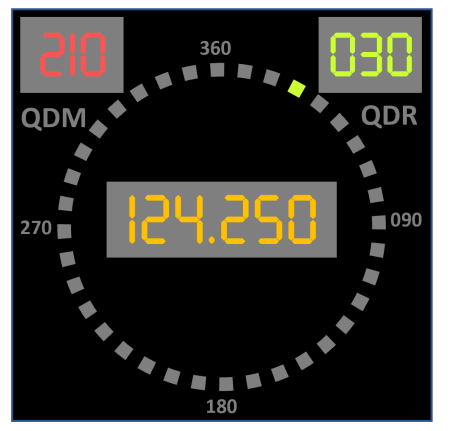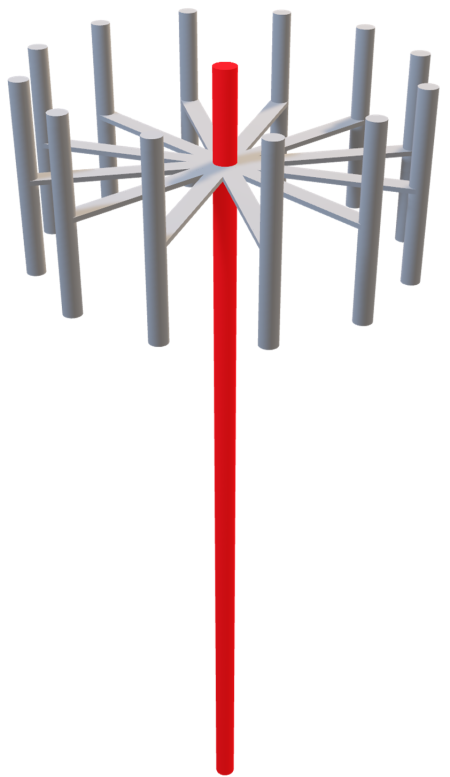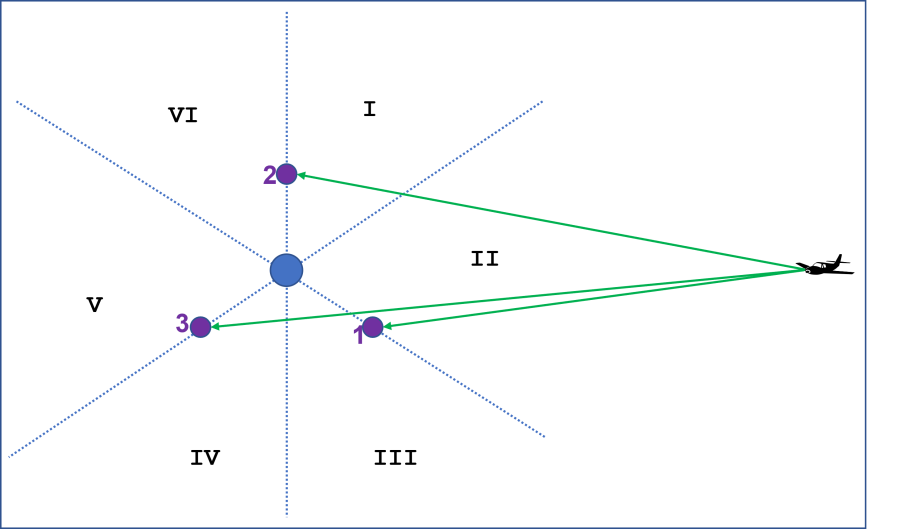VHF Direction Finding (VDF) is a method used to determine the direction of a VHF radio signal. This is typically used in aviation and marine navigation to locate the source of a transmission. VDF works by using a system of antennas to determine the direction of the incoming radio signal. The antennas are placed in a specific pattern and are used to measure the signal strength from different directions. The information from each antenna is then combined to determine the direction of the signal. VDF is an important tool for pilots and navigators as it can help them to quickly locate the source of a transmission and respond accordingly.
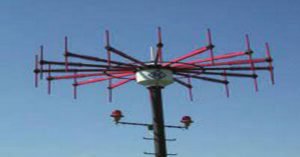
VHF Direction Finding (VDF)
Definition:
Radio direction-finding. Radiodetermination uses the reception of radio waves to determine the direction of a station or object.
Source: ICAO Annex 10, Volume II
Note: Radio direction-finding is a general term encompassing various applications using the same principle of operation.
The definition above was initially introduced by the International Telecommunication Union (ITU) and then adopted by ICAO. As VHF is the primary means of communication in civil aviation, the term VDF is most recognizable among aviation professionals.
Description:
The VHF direction finder (VDF) is a ground-based radio aid that consists of a directional antenna system and a VHF radio receiver, tuned to the operating frequency of an air traffic services unit.
Thus, when a transmission is received from an aircraft, the VDF provides the direction that transmission came from (i.e. azimuth relative to the receiver).
VDF stations may operate independently or as an array. In the former case, they only provide the direction of the transmitting station.
When two or more VFDs operate together, they can provide position information. This is done by calculating the intersection point of the bearings obtained from the different receivers.
The direction-finding principle of operation is not limited to the use of VHF. For example, the UDF (UHF direction finder) operates on UHF frequencies that are used by state aircraft.
An example of a standalone VDF equipment is shown in the picture below:
An example of VDF equipment integrated into the ATS system is shown in the picture below. The circle shows the estimated location of the received radio transmission.
The controller receives a call from IVB3011. This traffic was not supposed to be on the frequency, hence it is represented in a dull (dark grey) color on the situation display.
However, as the green circle indicates the approximate position of the transmitting station, the controller’s attention is drawn to a specific, small part of the airspace and they can therefore easily assess the situation and take appropriate action.
Principle of Operation:
The receiving antenna of a VDF consists of several (3 or more) elements mounted around a pole.
Each element receives the same signal but at a slightly different time (i.e. they receive different phases at the same time). This allows the system to calculate the direction from which the signal has been received. An example of an antenna with three elements is shown below:
The explanation below illustrates the principle of how the phase (time) difference of the received signal helps to determine the direction of the transmitting station.
The dotted lines consist of equidistant points about each of the elements. Thus, the space is divided into six areas. The signal is received by element 1 first, then by element 2, and finally, by element 3, this means that:
- Since element 1 receives the signal before element 2, the source is in one of the areas II, III, or IV
- Since element 2 receives the signal before element 3, the source is in one of the areas I, II, or VI
- Since element 1 receives the signal before element 3, the source is in one of the areas I, II, or III
The only area that fulfills all three conditions is area II, hence the aircraft is east of the VDF.
Real systems take into account the precise phase (time) differences, which allows them to calculate the bearing of the signal rather than just the general direction.
Depending on the particular implementation (e.g. number of antenna elements), the accuracy of bearing determination may vary. ICAO classifies the accuracy as follows:
- Class A – within 2 degrees
- Class B – within 5 degrees
- Class C – within 10 degrees
- Class D – worse than Class C
Similarly, the classification of estimated position accuracy (when an array of VFDs is used) is made by the following:
- Class A – within 5 NM
- Class B – within 20 NM
- Class C – within 50 NM
- Class D – worse than Class C
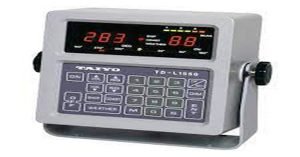
Applications
- Enhancing air traffic controllers’ situational awareness. VFDs have been used for this purpose for decades. Even as a standalone tool, they provide an idea of the position of the aircraft. If integrated with surveillance equipment, they may indicate which target on the screen made the last transmission. In the early days of radar, when plan position indicators were used, a strobe of light flashed from the center of the radar display in the direction of the target representing the transmitting aircraft. Modern systems utilize arrays of VFDs that can indicate the approximate location on the situational display (e.g. by drawing a circle around the calculated position). While this would not uniquely identify an aircraft in a busy environment, it would draw the controller’s attention to a small portion of the airspace where only a few aircraft are present as opposed to forcing them to scan the entire screen. This is particularly helpful in congested airspaces where aircraft with similar callsigns (e.g. several flights from the same operator) are present at the same time.
- Navigational assistance. The pilot would request bearing information from the ground station and will be provided with a QDM (magnetic bearing to) or QDR (magnetic bearing from). This will help them determine their position and direction of movement (more than one call on the frequency may be necessary). True bearings are also available but are used less frequently.
- Homing. The pilot requests a series of DMs to home to a VDF station. These requests are normally at intervals of about one minute during the initial stages of the homing, increasing in frequency as the VDF is approached.
- PDF approach. This is a type of instrument, non-precision approach. Information about aerodromes for which VDF approaches are established is published in national AIPs. An example of such an aerodrome is Cranfield (EGTC).
- Unauthorized use of ATC frequency. Law enforcement agencies can use VDF equipment to locate the source of unauthorized transmissions.

Radiotelephony Procedures
Note: No standard ICAO phraseology is defined for VDF procedures. ICAO Annex 10 Vol. II contains general communication procedures when direction finding equipment is used. The phraseology in this section is derived from UK CAA CAP 413 Radiotelephony Manual.
For the aeronautical station to properly determine the bearing or position of an aircraft, the pilot may need to transmit a message of a specific length or more.
When providing a bearing or position information, the aeronautical station must specify the accuracy class.
Position information is provided as coordinates, degrees, and minutes are used followed by the words NORTH/EAST/SOUTH/WEST as appropriate.
The pilot must read back the information received for confirmation or correction.
Example:
- Pilot: TOWER, DVK1208, REQUEST QDM
- Controller: DVK1208, QDM 110 DEGREES, CLASS B
- Pilot: QDM 110 DEGREES, CLASS B, DVK1208
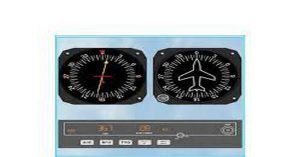
Related Articles
- Surveillance
- Identification
- Automated Direction Finder (ADF)
- Unauthorized Use of ATC Frequency
Further Reading
- ICAO Annex 10, Volume II, Chapter 6
- ICAO Doc 9426, Part III, Section 1, Chapter 6
- UK CAA CAP 413 Radiotelephony Manual
- EUROCONTROL: Radio direction finder (RDF) leaflet
Read more:

